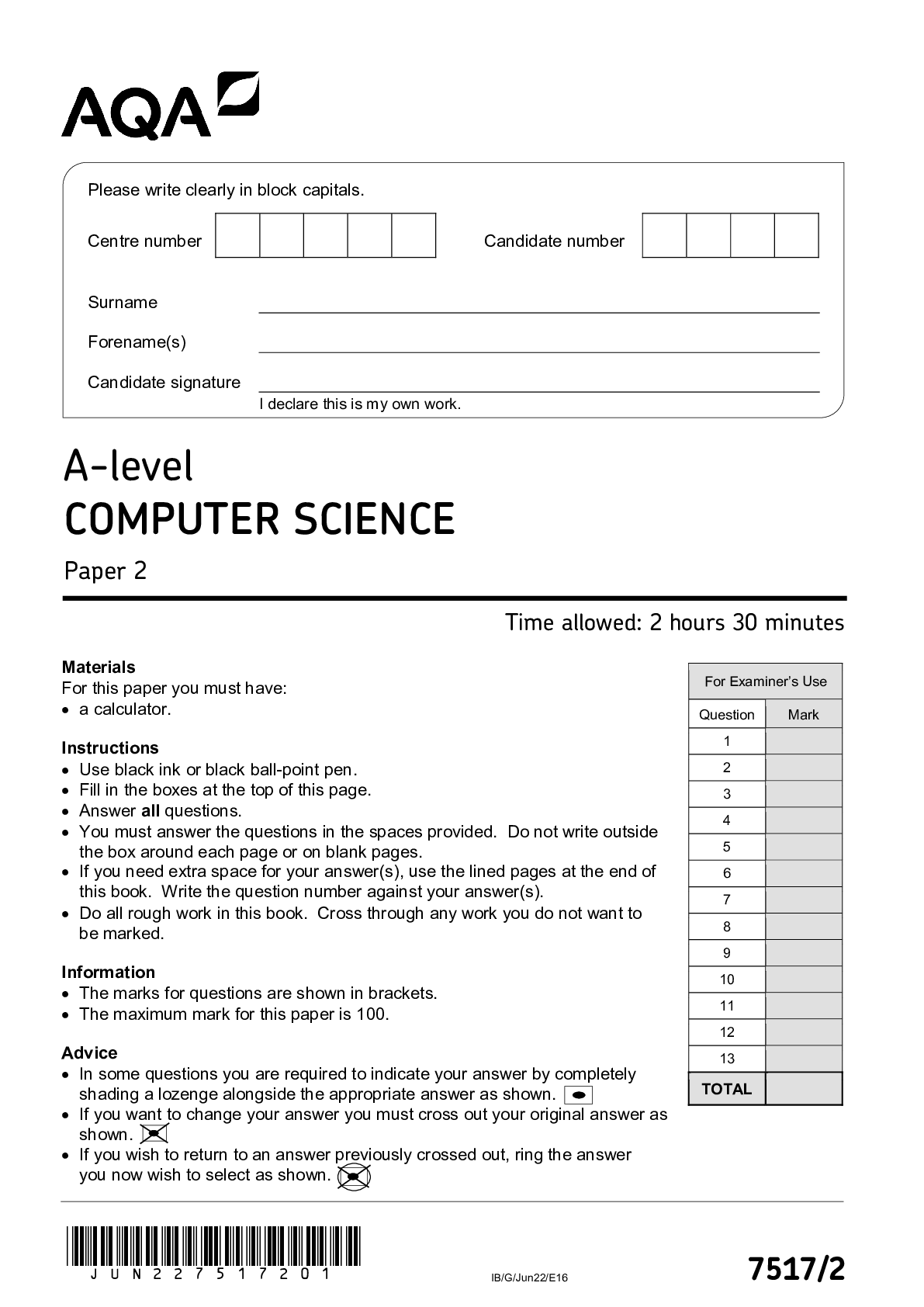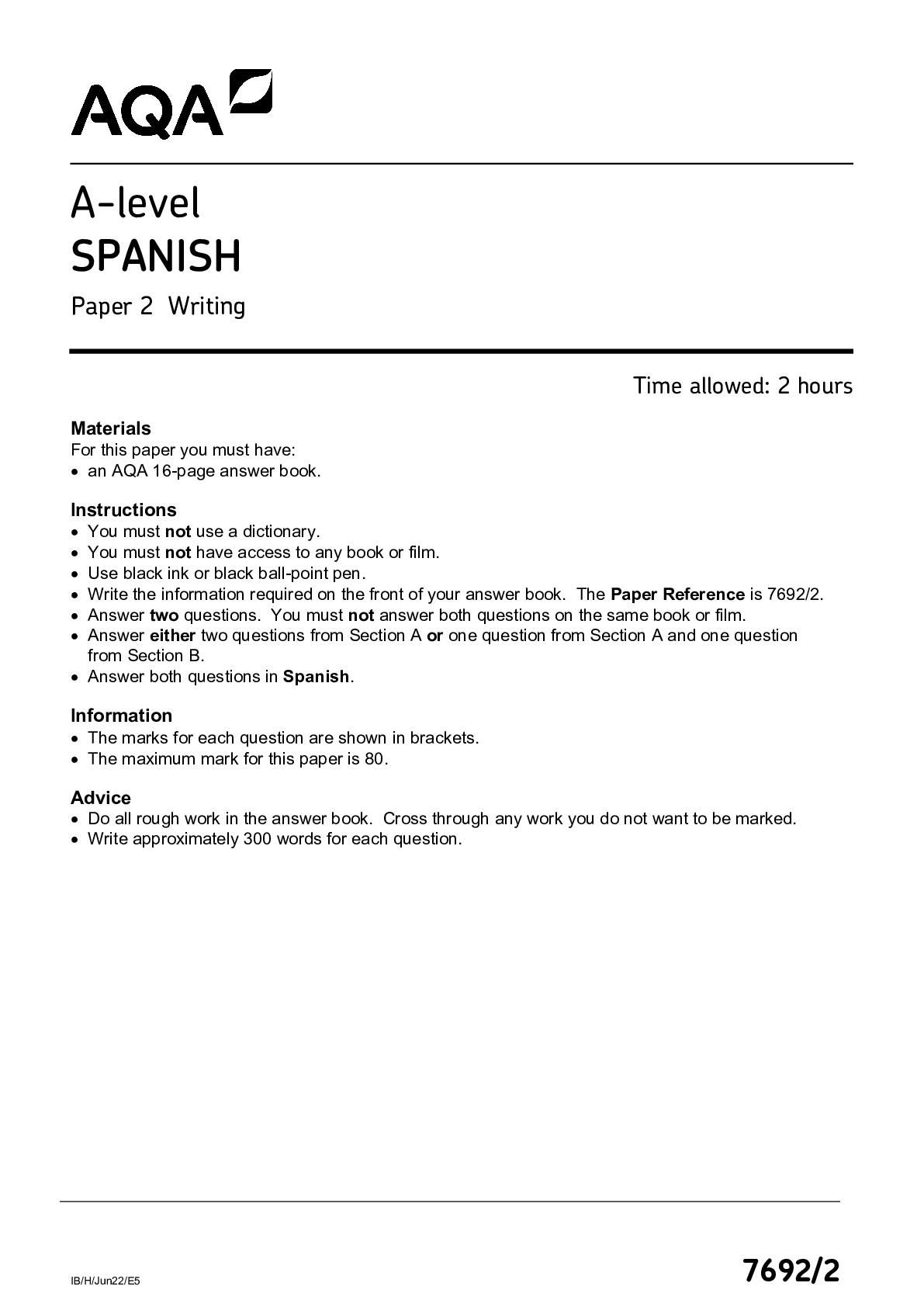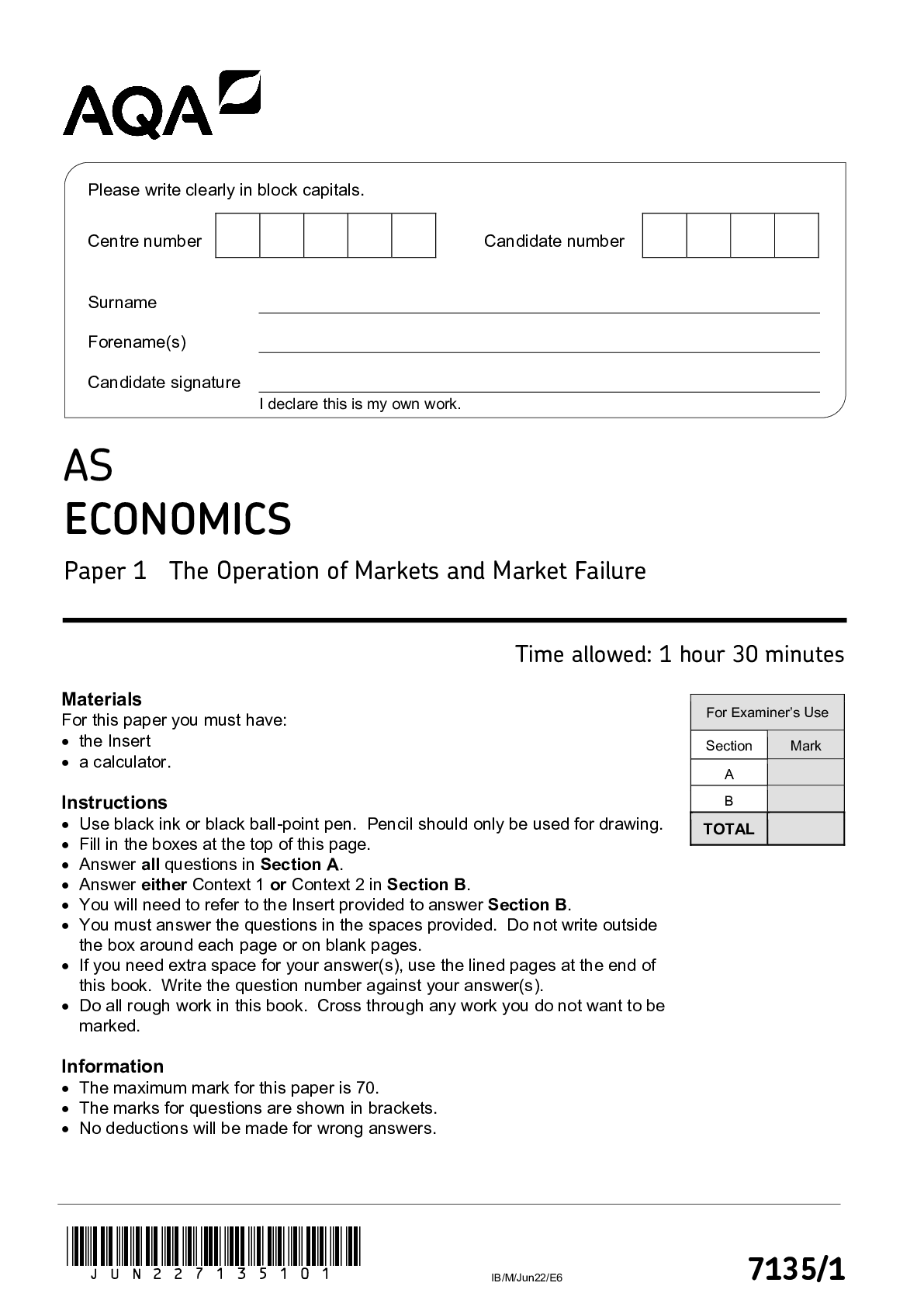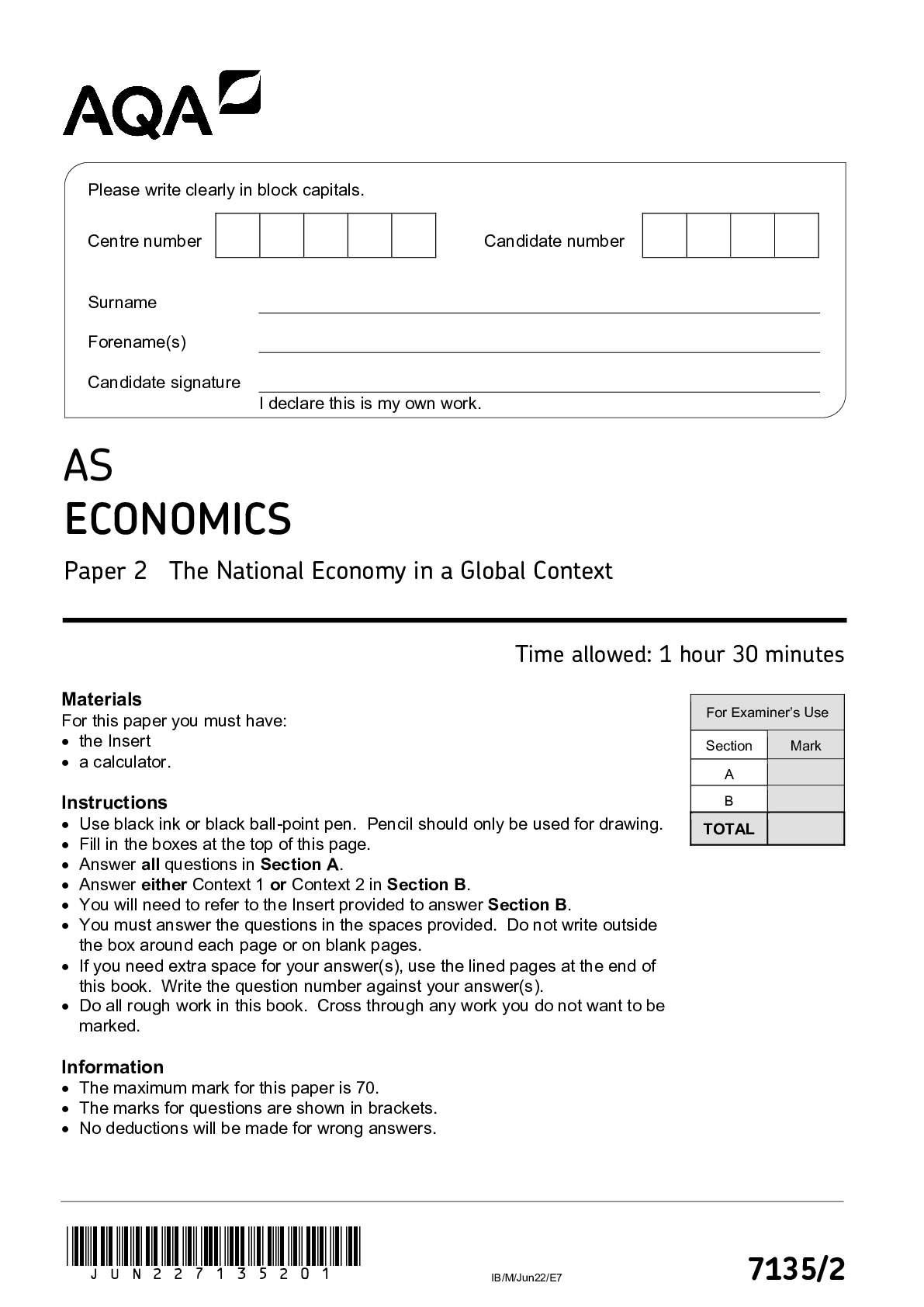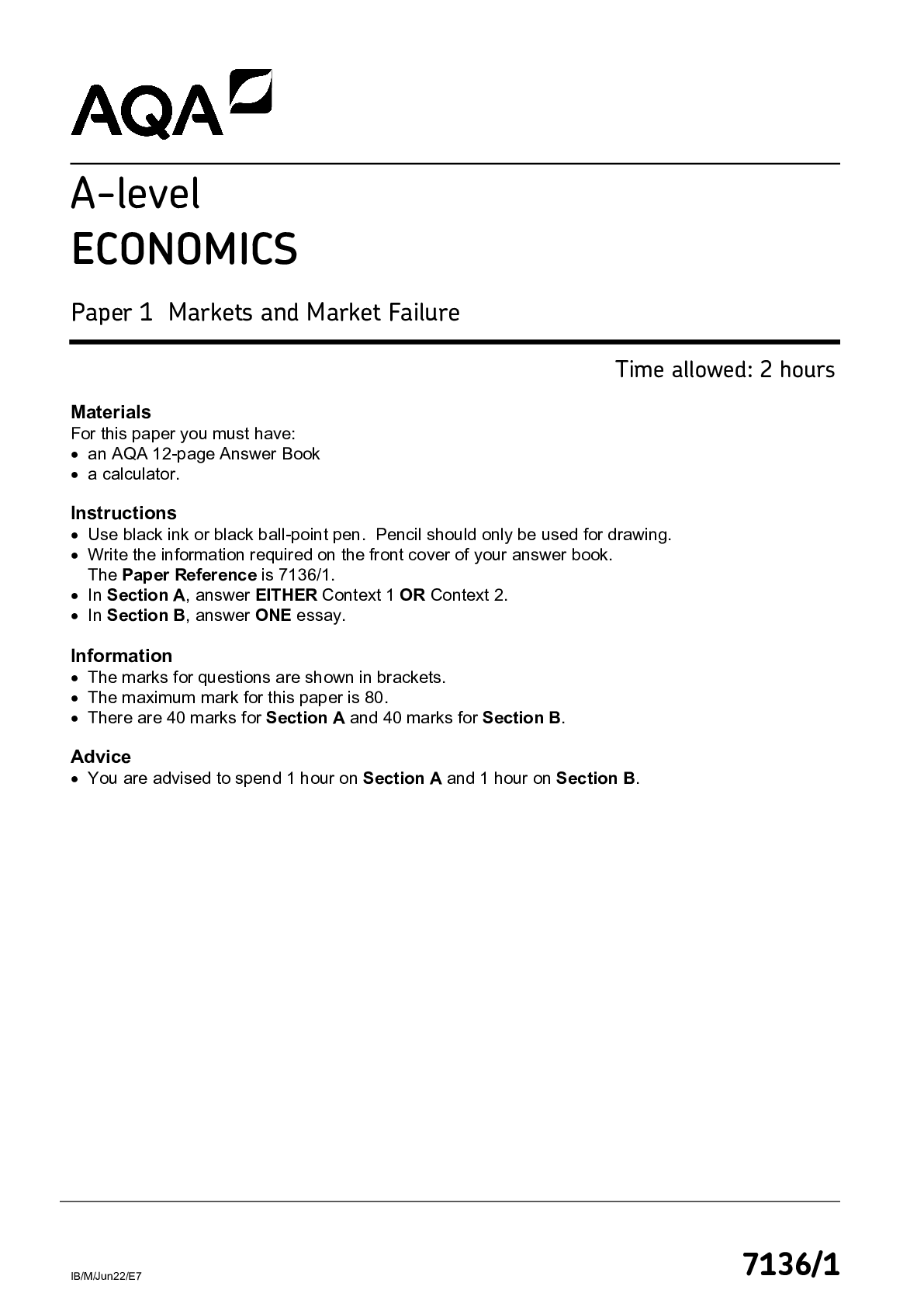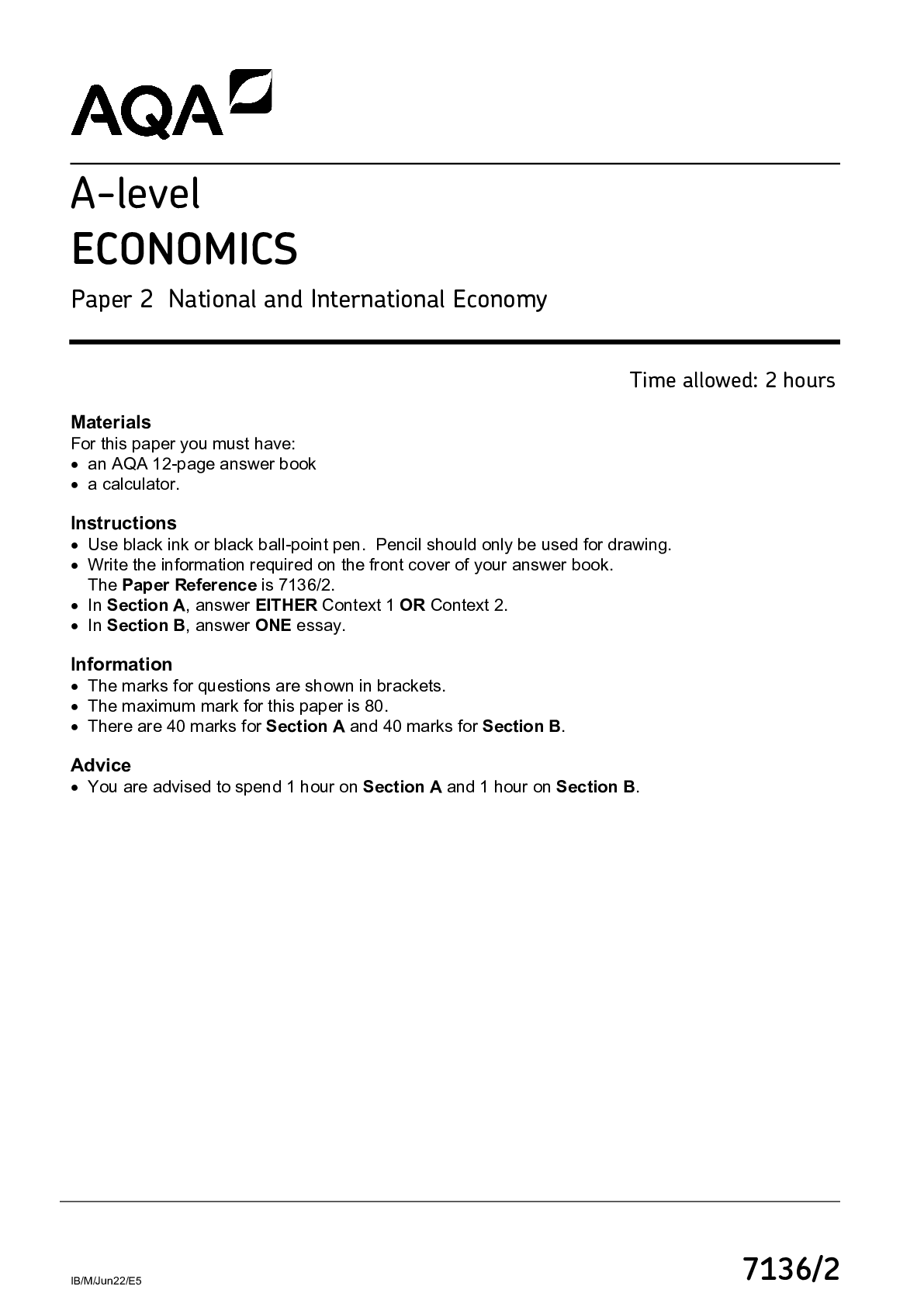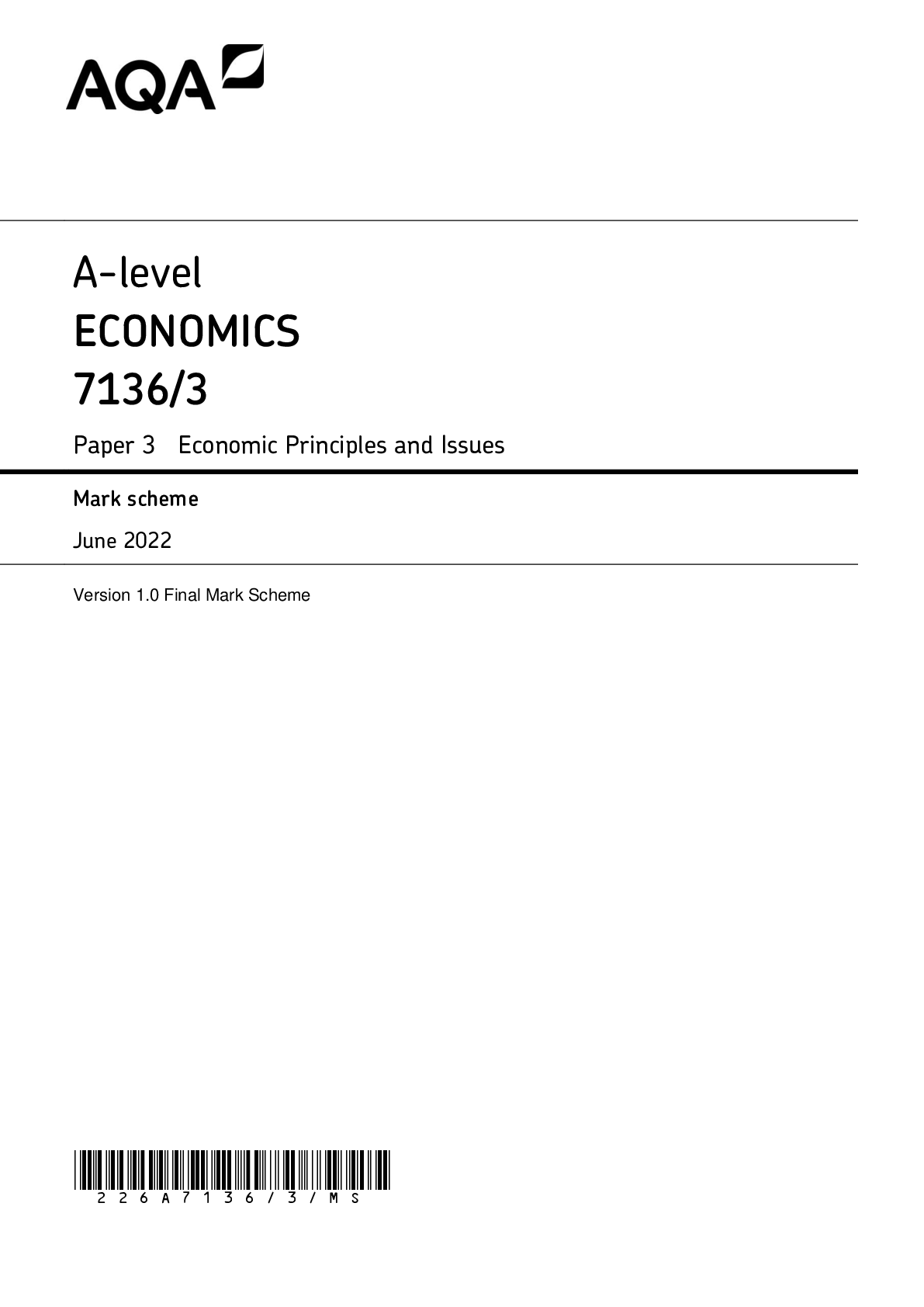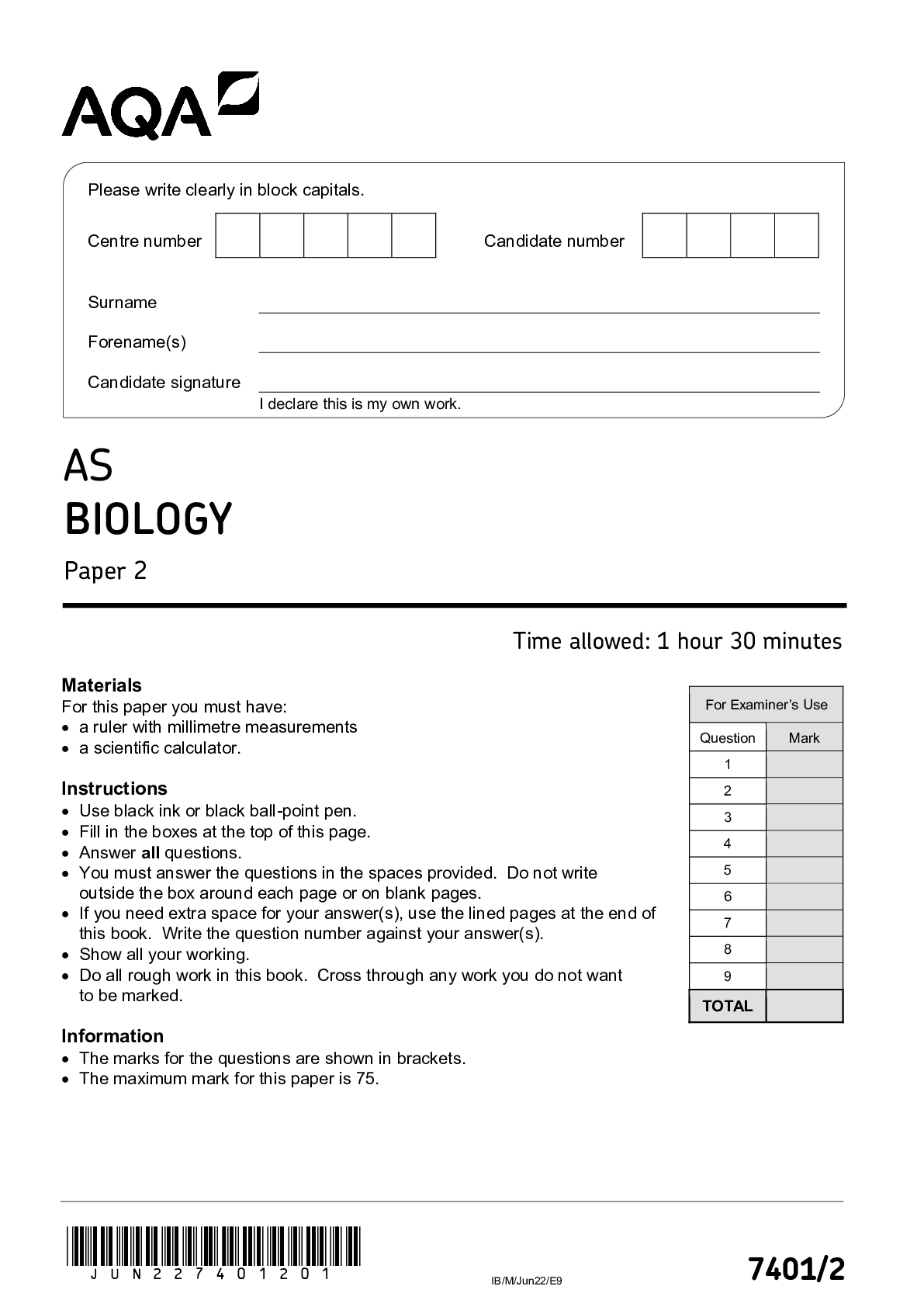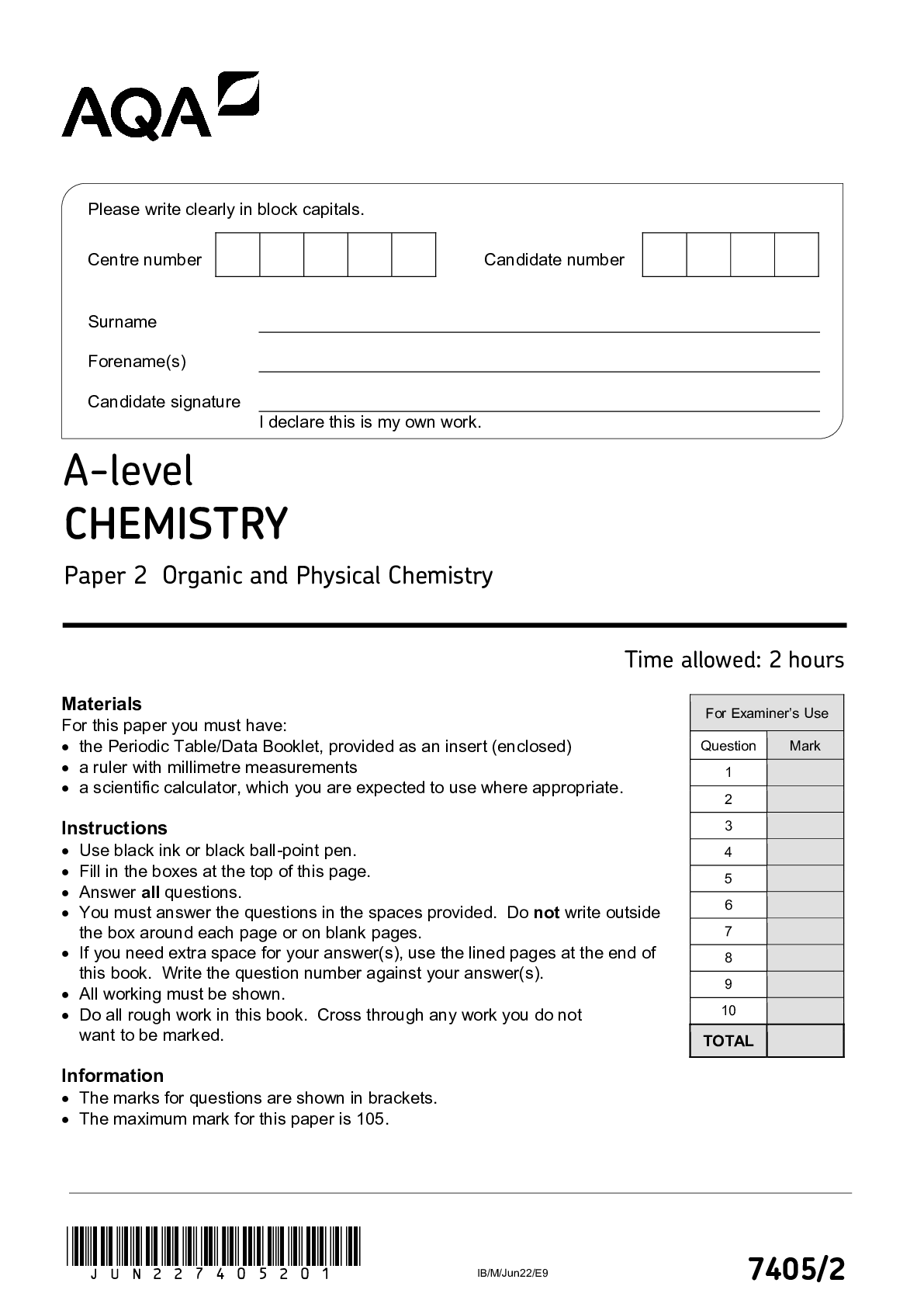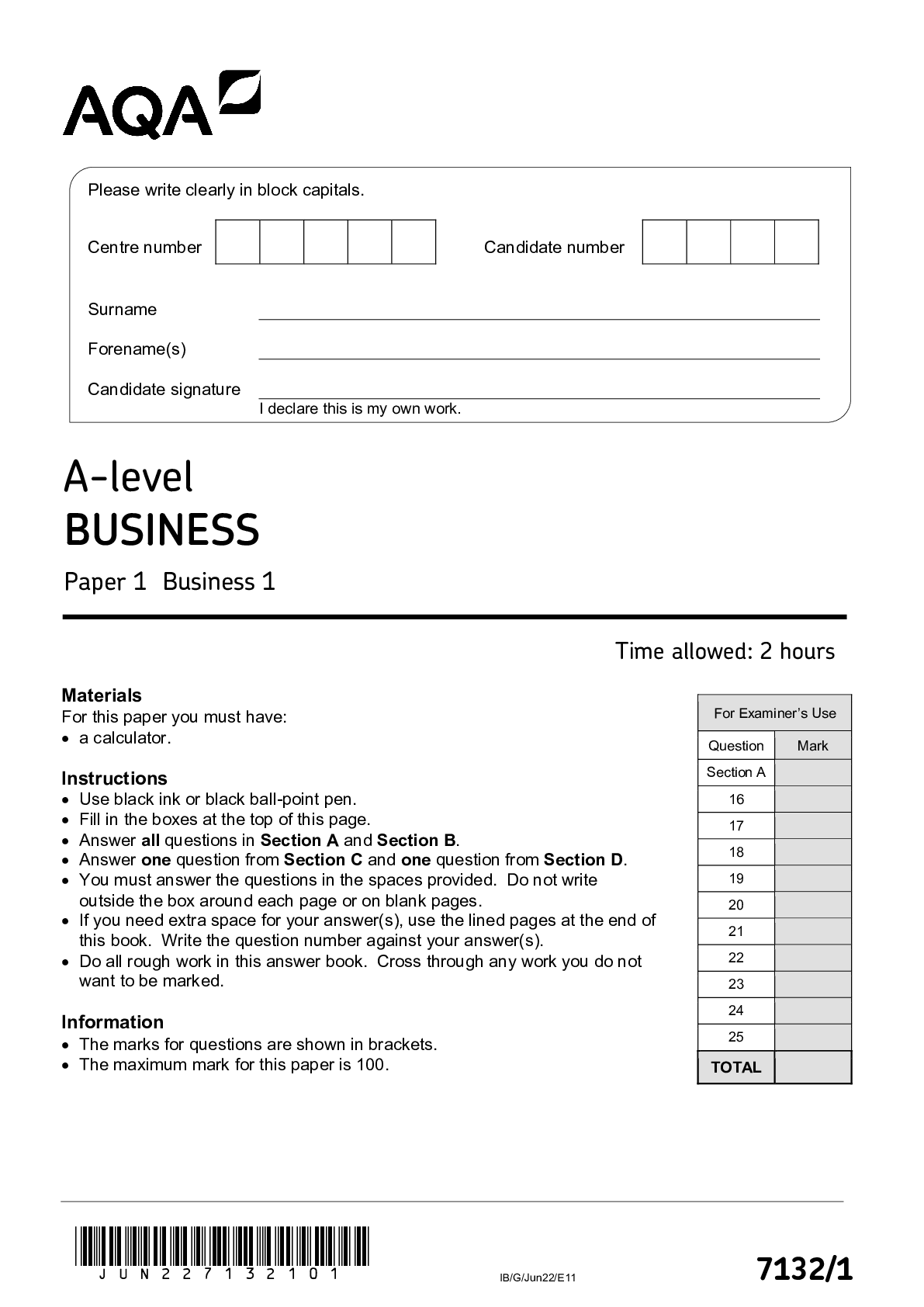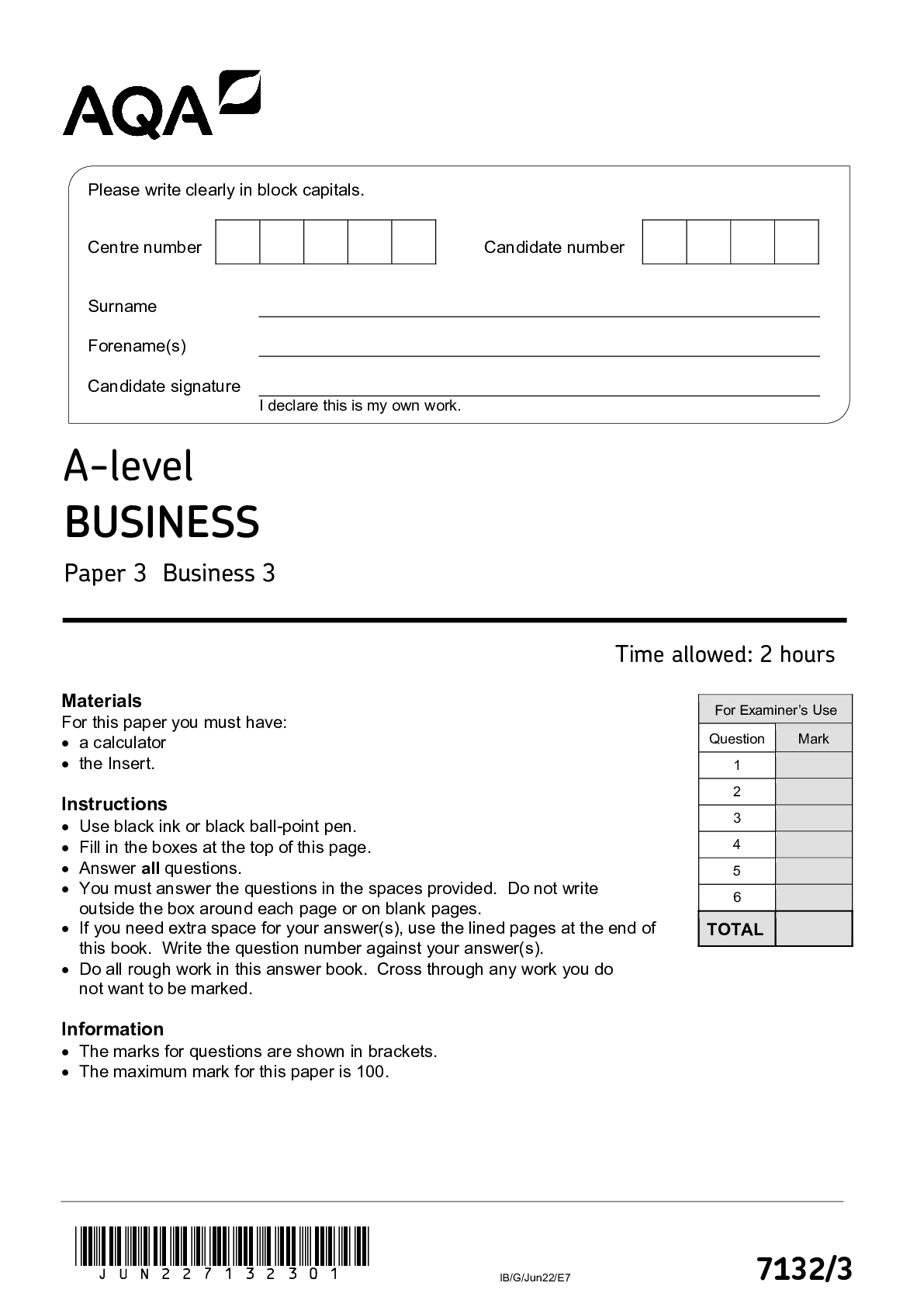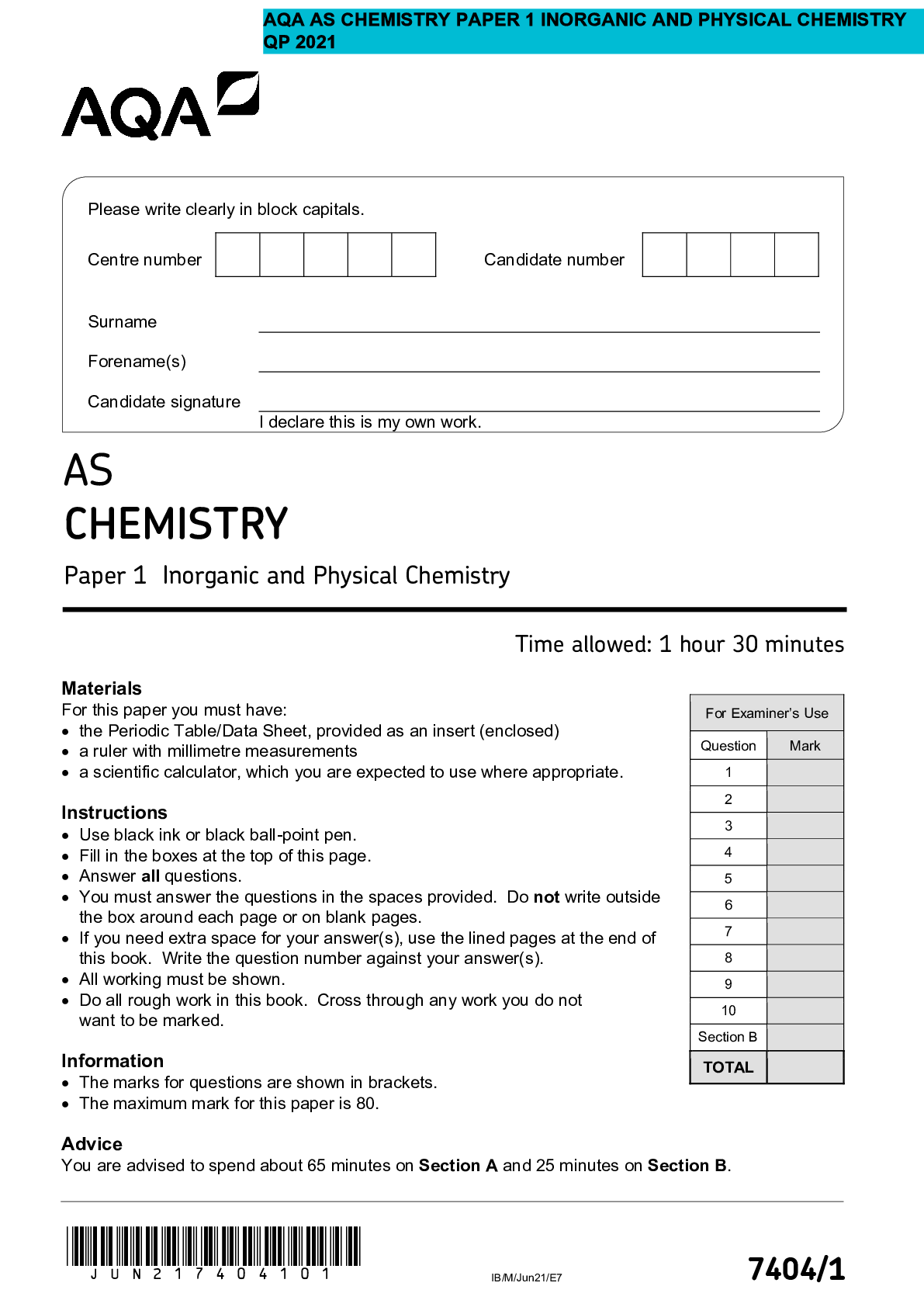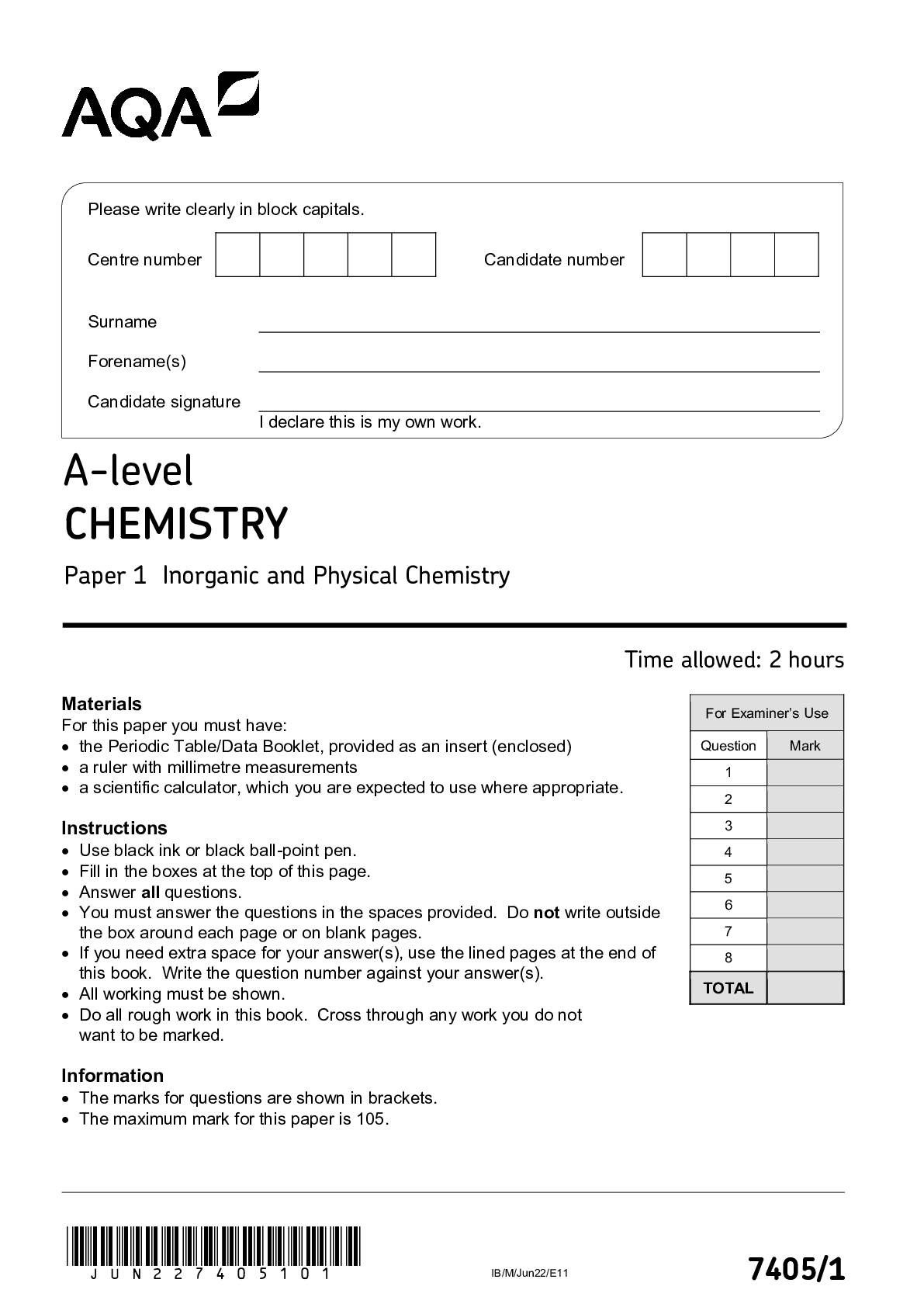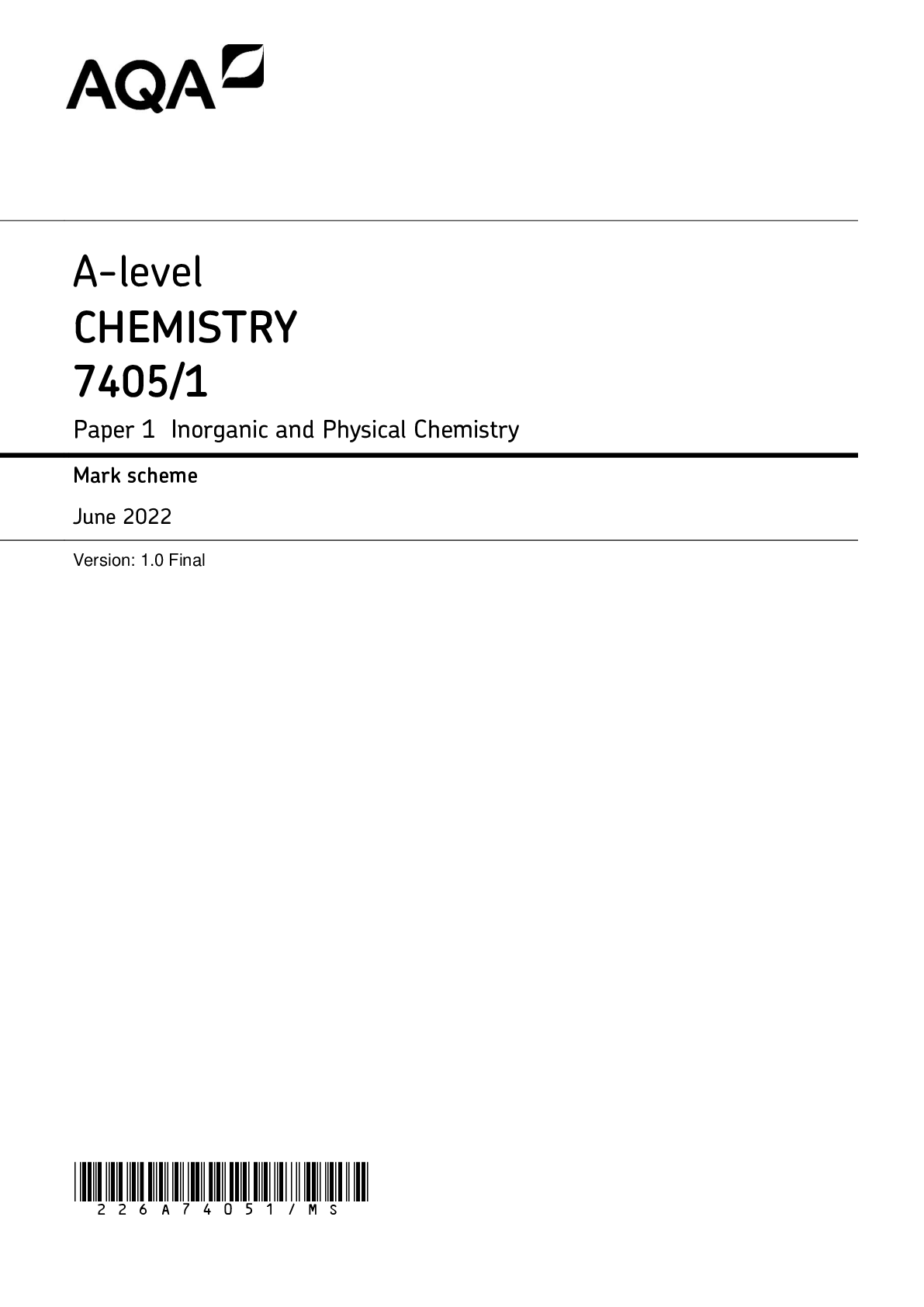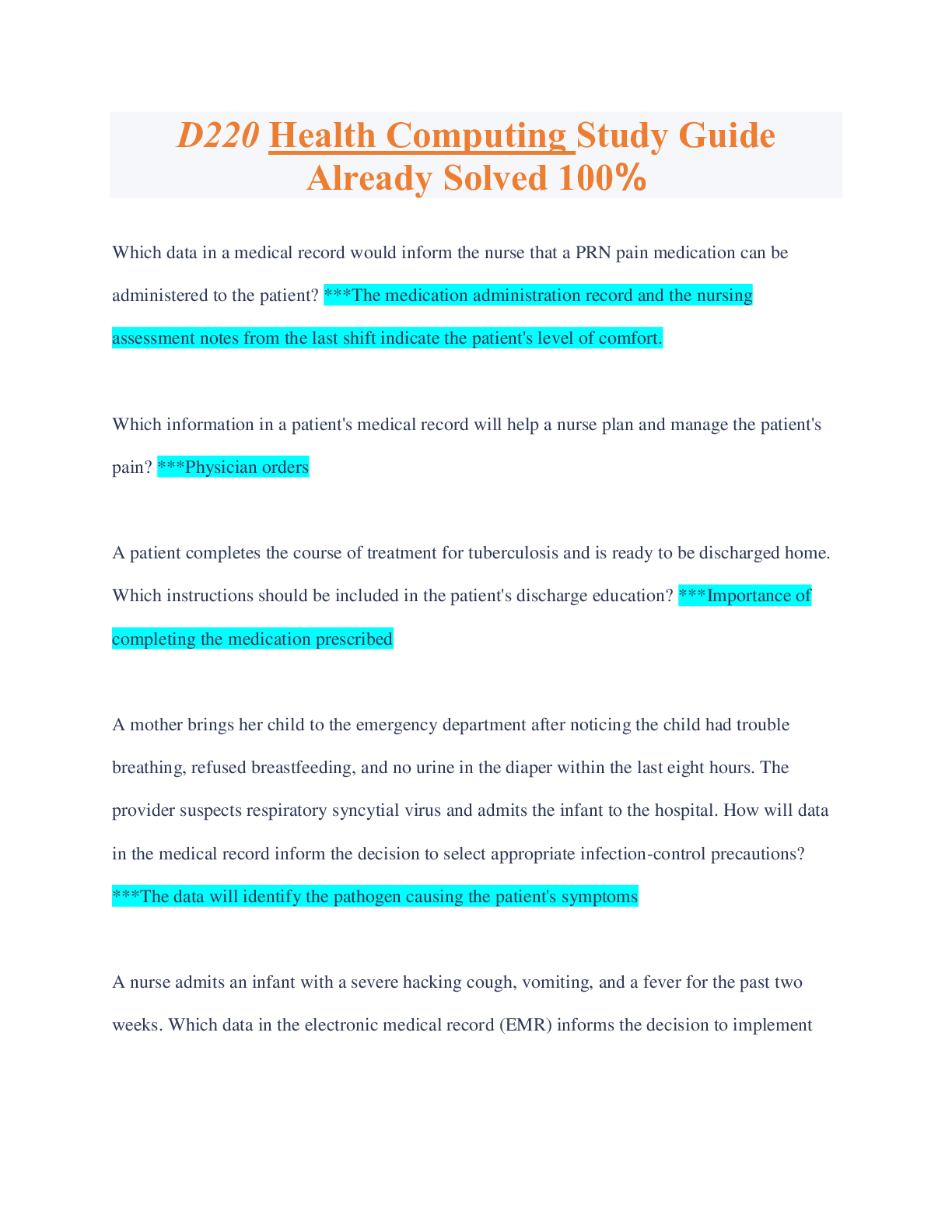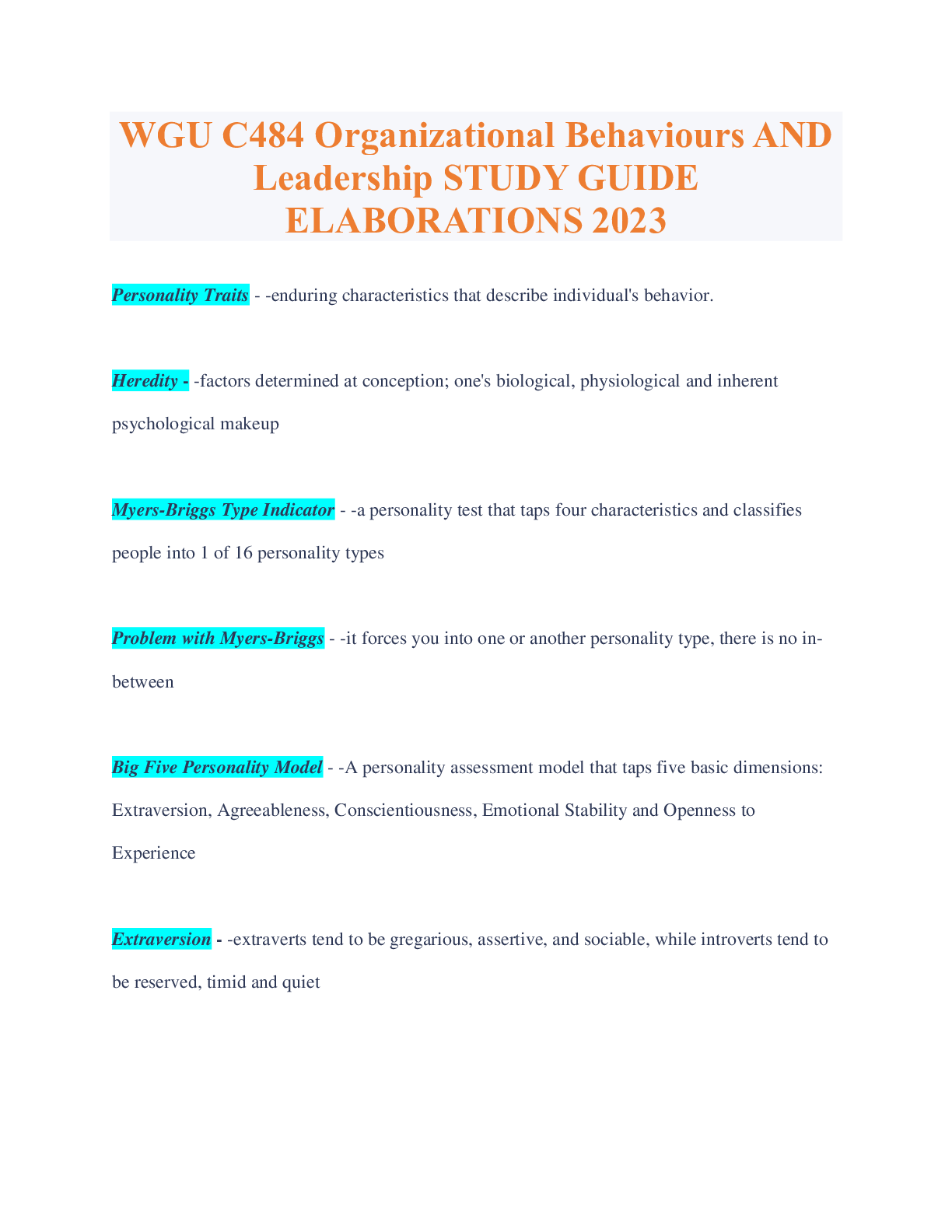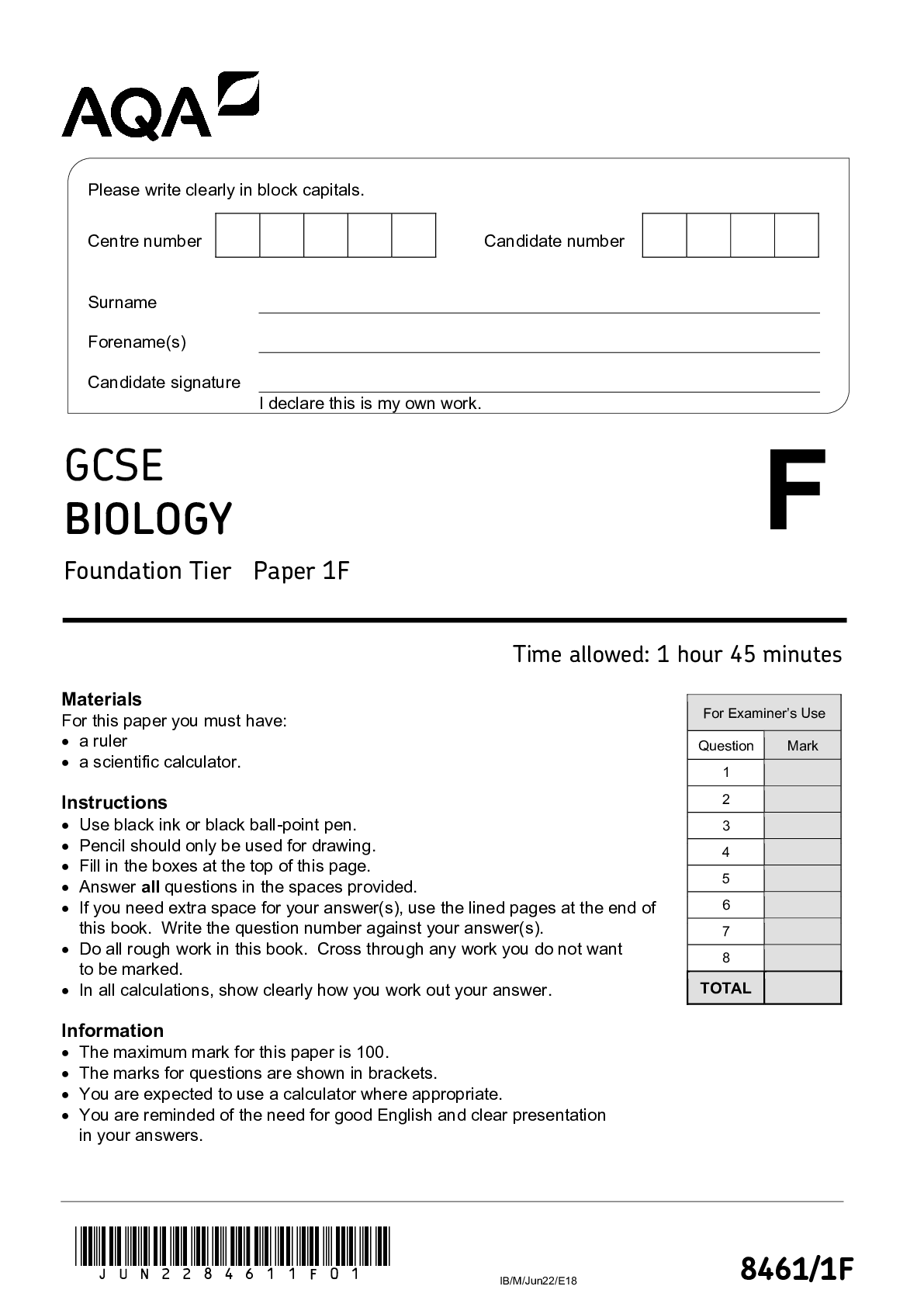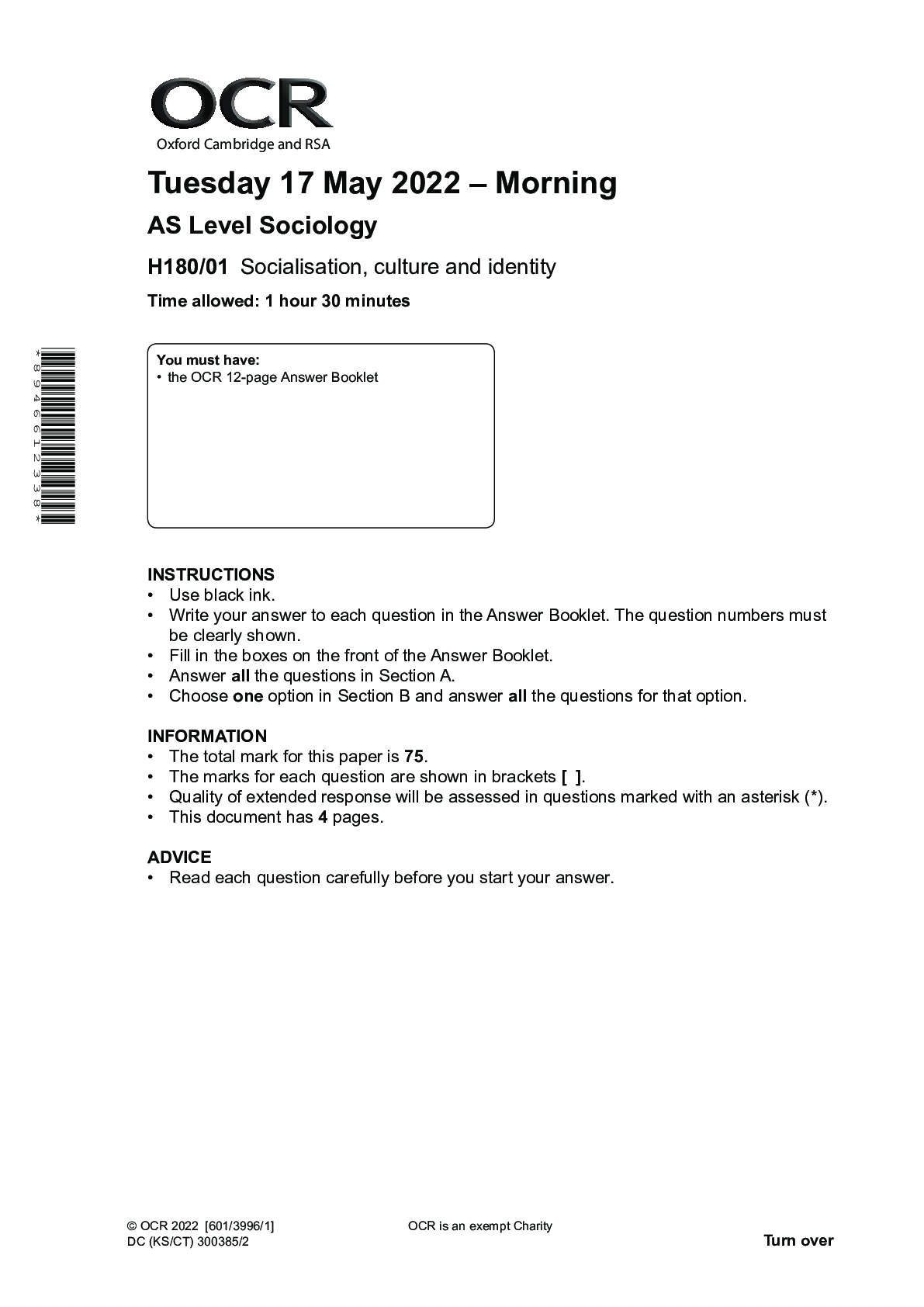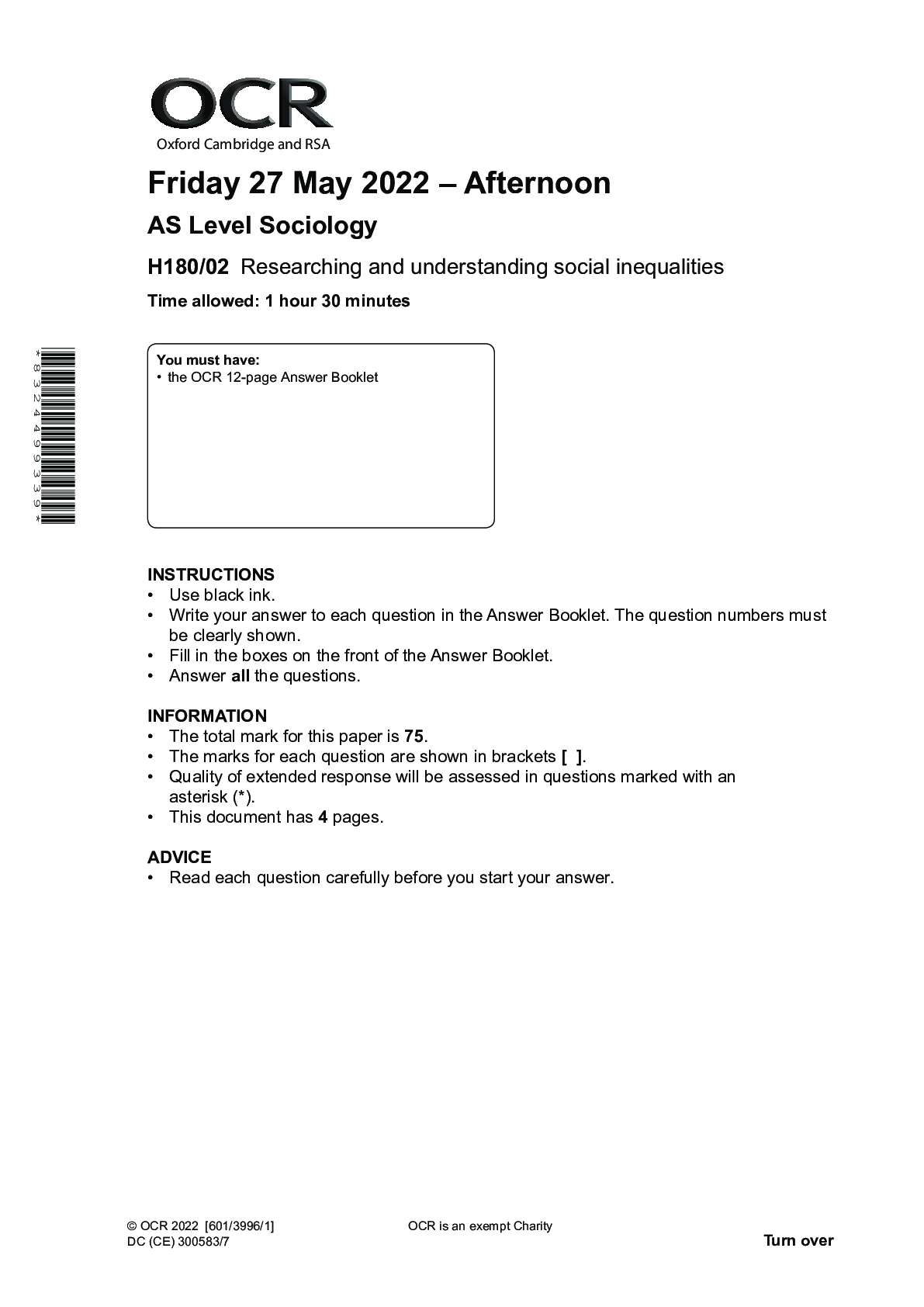Chemistry > AQA A/As Level Question Paper > AS CHEMISTRY Paper 2 Organic and Physical Chemistry 2 *02* IB/M/Jun22/7404/2 (All)
AS CHEMISTRY Paper 2 Organic and Physical Chemistry 2 *02* IB/M/Jun22/7404/2
Document Content and Description Below
AS CHEMISTRY Paper 2 Organic and Physical Chemistry 2 *02* IB/M/Jun22/7404/2 Do not write outside the Section A box Answer all questions in this section. 0 1 This question is about rates o... f reaction. Potassium manganate(VII), KMnO4, reacts with sodium ethanedioate, Na2C2O4, in the presence of dilute sulfuric acid. 2 MnO4 –(aq) + 16H+(aq) + 5C2O4 2–(aq) → 2 Mn2+(aq) + 8H2O(l) + 10CO2(g) The reaction mixture is purple at the start and goes colourless when all the MnO4 –(aq) ions have reacted. The rate of reaction can be measured as 1000 t where t = the time taken for the mixture to go colourless. A student investigated how long it takes for this reaction mixture to go colourless at different temperatures. The same concentrations and volumes of each reagent were used in an experiment at each temperature. Table 1 shows the results. Table 1 Temperature / C 32 38 44 54 67 Time t / s 155 85 50 22 9 1000 t 6.45 11.8 20.0 45.5 0 1 . 1 Complete Table 1. [1 mark] 0 1 . 2 State the independent variable in this investigation. [1 mark] 0 1 . 3 The student noticed that the temperature of each reaction mixture decreased during each experiment. Suggest how the student calculated the temperature values in Table 1. [1 mark] 3 *03* Turn over ► IB/M/Jun22/7404/2 Do not write outside the box Use the data in Table 1 to plot a graph of 1000 t against temperature. [3 marks] 0 1 . 4 0 1 . 5 Use your graph in Question 01.4 to find the time taken for the mixture to go colourless at 60 °C Show your working. [1 mark] Time t s 4 *04* IB/M/Jun22/7404/2 Do not write outside the box 0 1 . 6 The investigation shows that increasing the temperature causes the rate of reaction to increase. Explain why a small increase in temperature causes a large increase in the rate of reaction. [2 marks] 9 5 *05* Turn over ► IB/M/Jun22/7404/2 Do not write outside the Turn over for the next question box DO NOT WRITE ON THIS PAGE ANSWER IN THE SPACES PROVIDED 6 *06* IB/M/Jun22/7404/2 Do not write outside the box 0 2 A student has samples of these four compounds but does not know which is which: • butanoic acid • 2-methylpropanal • 2-methylpropanoic acid • 2-methylpropan-1-ol Step 1: Two of these compounds can be identified by simple chemical tests. Step 2: The other two compounds, that contain the same functional group as each other, can then be distinguished using a spectroscopic technique. Describe how these two steps could be used to identify which compound is which. [6 marks] 7 *07* Turn over ► IB/M/Jun22/7404/2 Do not write outside the box 6 8 *08* IB/M/Jun22/7404/2 Do not write outside the 0 3 box This question is about isomers. Hex-2-ene has the molecular formula C6H12 0 3 . 1 Draw the displayed formula of a position isomer of hex-2-ene that exists as E and Z isomers. [1 mark] 0 3 . 2 Draw the displayed formula of a chain isomer of hex-2-ene that does not exist as E and Z isomers. [1 mark] Butanal has the molecular formula C4H8O 0 3 . 3 Draw the skeletal formula of a functional group isomer of butanal that has an absorption in the range 1680–1750 cm–1 in its infrared spectrum. [1 mark] 9 *09* Turn over ► IB/M/Jun22/7404/2 Do not write outside the 0 3 box . 4 Draw the skeletal formula of a structural isomer of butanal that has an absorption in the range 3230–3550 cm–1 in its infrared spectrum. [1 mark] 0 3 . 5 Several saturated halogenoalkanes contain 17.8% carbon, 3.0% hydrogen and 79.2% bromine by mass. Calculate the empirical formula of these compounds. Give the IUPAC names of two saturated halogenoalkanes that have this empirical formula. [4 marks] Empirical formula Names of halogenoalkanes 1 2 8 10 *10* IB/M/Jun22/7404/2 Do not write outside the box 0 4 This question is about gas volumes. 0 4 . 1 TNT (C7H5N3O6) is an explosive because it can decompose very quickly and exothermically to form a large volume of gas. An equation for this decomposition is 2C7H5N3O6(s) → 3N2(g) + 5H2(g) + 12CO(g) + 2C(s) Calculate the volume of gas, in m3, measured at 1250 °C and 101000 Pa, produced by the decomposition of 1.00 kg of TNT (Mr = 227.0). The gas constant, R = 8.31 J mol–1 K–1 [5 marks] Volume of gas m3 11 *11* Turn over ► IB/M/Jun22/7404/2 Do not write outside the box 0 4 . 2 Alkenes have the general formula CnH2n When alkenes undergo complete combustion, 1.0 mol of CnH2n reacts with 3n 2 mol of oxygen. Calculate the volume of oxygen needed for the complete combustion of 200 cm3 of but-1-ene. The volumes of all gases are measured at the same temperature and pressure. [1 mark] Volume of oxygen cm3 0 4 . 3 Alkanes have the general formula CnH2n+2 Alkanes undergo complete combustion in a plentiful supply of oxygen. CnH2n+2 + xO2 → nCO2 + (n+1)H2 [Show More]
Last updated: 1 year ago
Preview 1 out of 32 pages

Reviews( 0 )
Document information
Connected school, study & course
About the document
Uploaded On
Apr 01, 2023
Number of pages
32
Written in
Additional information
This document has been written for:
Uploaded
Apr 01, 2023
Downloads
0
Views
97

